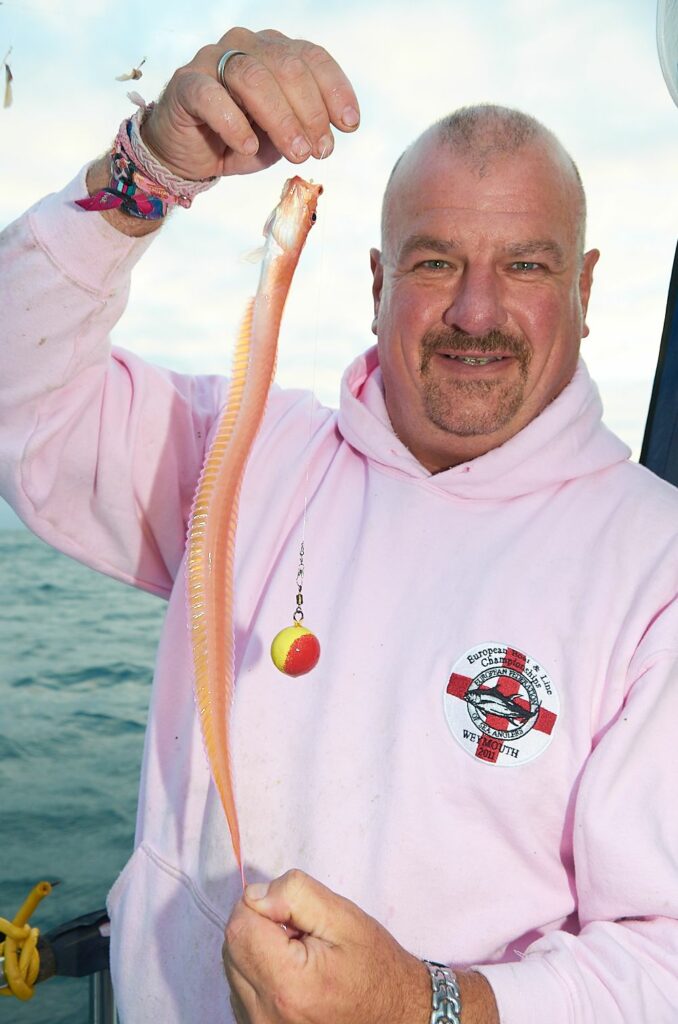About the Red Band Fish
The Talk Sea Fishing guide to catching red band fish, high on the species hunters list, we look at the tactics used to catch them.
The colouration is distinctive, red or reddish-orange, with the belly having a noticeable yellowish tinge. The fins also have a yellowish colouring, except that the forward-facing part of the dorsal fin has more red in it.
The average length is around 14-inches, though much larger ones are not uncommon, and they can reach 28-inches in length.

To give prospective anglers a heads up on good areas where colonies of red-band fish exist are off Weymouth, Plymouth Sound, ground well off from Lundy Island, off Anglesey and in the deeper Scottish sea lochs. In Ireland, less is known of their whereabouts, but there are clusters off Cobh in Co Cork, off Fenit, Co Kerry, and also inside Donegal Bay off Killybegs in Donegal.
Their overall distribution is not geographically uniform. They tend to be in colonies over ideal ground but then not found for some considerable distance. They live in vertical burrows in a thick mud or mud/sand bottom in depths from about 50-feet (this is rare, though) to 600-feet.
About the red band fish
Although not a rare fish regarding habitation in UK waters, the Red-Band Fish is rarely caught on rod and line unless you specifically target them. It’s a fish that is high on the species hunters list and therefore warrants a feature all on its own.Red band fish identification
There is little you can confuse the red-band fish with. It is eel-like in body shape. The body is long and slender but with a long dorsal fin originating above the gill cover and running all the way to the tail. The dorsal at the tail ends in a thin, almost hair-like wisp. The anal fin begins about the length of the head rear of the pectoral fin and again runs all the way to the tail. The eye is large. The mouth slants upwards and has fairly large, well-spaced teeth evident in both jaws.The colouration is distinctive, red or reddish-orange, with the belly having a noticeable yellowish tinge. The fins also have a yellowish colouring, except that the forward-facing part of the dorsal fin has more red in it.
The average length is around 14-inches, though much larger ones are not uncommon, and they can reach 28-inches in length.

Distribution
Red-band fish are found throughout the English Channel as far east as the Kent coast but are commonest in the southwest, throughout the Irish Sea as far as the northwest of Scotland. Also, all around the coast of Ireland. There is some evidence they are resident in the southern North Sea, but confirmation is hard to quantify.To give prospective anglers a heads up on good areas where colonies of red-band fish exist are off Weymouth, Plymouth Sound, ground well off from Lundy Island, off Anglesey and in the deeper Scottish sea lochs. In Ireland, less is known of their whereabouts, but there are clusters off Cobh in Co Cork, off Fenit, Co Kerry, and also inside Donegal Bay off Killybegs in Donegal.
Their overall distribution is not geographically uniform. They tend to be in colonies over ideal ground but then not found for some considerable distance. They live in vertical burrows in a thick mud or mud/sand bottom in depths from about 50-feet (this is rare, though) to 600-feet.

